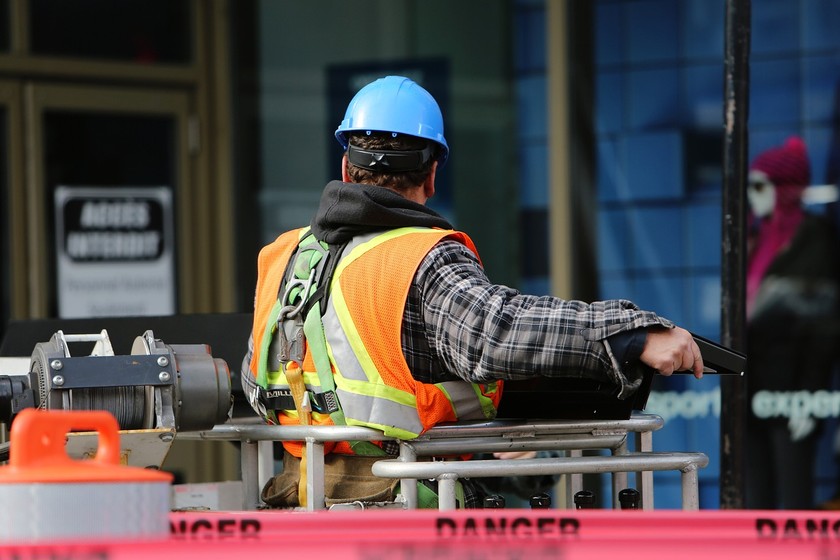Working at height with a MEWP is secure and reliable – but only if you put your safety first and follow the necessary precautions. While there are no legal MEWP harness requirements when working at height, wearing one is strongly recommended – particularly for boom lift operators – to help protect you from fatal falls.
If your platform swings, jolts, or tilts unexpectedly away from your machine’s centre of gravity, your operator can suffer whiplash or even be flung from the basket. And the higher you are, the faster you’ll be thrown.
So, getting up to speed on when, where and how to wear harnesses as part of a fall restraint system is essential to make sure your operations and operators are in safe hands. To get you started, our IPAF training experts offer their advice.
When Are Boom Lift Harnesses Needed?
Worldwide IPAF safety campaigns warn against the ‘catapult effect’ when working in the basket of a platform. Even a small dip at ground level can travel up the boom lift to put your operator at risk. And it’s difficult, often impossible, to be certain that your ground conditions are completely flat. Being aware of your surroundings is crucial, so that your machine doesn’t get caught in tight spaces to catapult your operator.
As such, although your site regulations may or may not require it, IPAF training experts recommend that a boom lift harness should be used for cherry pickers when a job-specific risk assessment deems it necessary and should be regularly inspected as part of the Provision and Use of Work Equipment Regulations 1998 (PUWER and PPE Regulations 1992).
Using A Boom Lift Over Water
Alternatively, if you’re using cherry picker over water, your risk assessment may advise instead to replace any boom lift harness with a life jacket, so, should the operator fall, they are protected from the immediate danger.
Do You Need a Harness on a Scissor Lift?
Unlike a cherry picker, it’s not always necessary to use harnesses in scissor lifts (or other types of fall protection equipment), unless called for by exceptional circumstances. The platform area is more substantial compared to that of boom lifts, so wearing a harness at height can often restrict mobility to access the platform space.
A job-specific risk assessment will determine whether scissor lift harness requirements should be adhered to, depending on the conditions you face – but make sure to also consult the manufacturer’s operators’ manual for your machine too.
What harness should you wear?
When you come to using a boom lift, your fall restraint system should comprise of:
- A platform anchorage
- A full body harness
- A short or adjustable restraint lanyard
Our IPAF training experts recommend that the lanyard should be kept as short as possible when wearing harnesses at height.
This way it’ll remain taut when anchored to the platform. You may need to adjust the length depending on your operator’s height and the height of the anchorage point on the machine – making sure that it doesn’t droop, for maximum protection.
How Should You Maintain Your Harnesses?
No matter how often you use a boom lift harness, you need to make sure they are fully inspected every 6 months, and every time after being exposed to harsh conditions. As part of a standard risk assessment, our team will make sure harnesses are fully checked to ensure that your operator is always safe when wearing harnesses at height.
If you need some help, you can contact Horizon to organise harness inspections and ensure your fall restraint equipment is up to standard.
Even better, book onto our Safety Harnesses Course to get up to speed on statutory regulations, fitting and maintaining your harness, and carrying out your own inspections. Our IPAF training experts are on-hand to keep you up to date on the latest industry advice for wearing harnesses at height.
Want to know more about scissor lift/cherry picker harness requirements? Our experts run certified IPAF training courses, available 6 days a week. Alternatively, explore more from our team over on our blog, including some of the biggest health risks when working from height.



